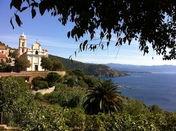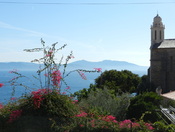How did Corsica acquire a Greek Orthodox church named after the patron saint of potters?
In 1676 some 730 Greeks from the Mani peninsula in the Peloponnese arrived in the area after fleeing the Ottomon Turks at home and the imposition of new taxes. At this time the Genoese controlled Corsica and welcomed the Greeks as part of their colonisation plans. They were not made nearly as welcome by the Corsicans and this led to them spending nearly 45 years in Ajaccio. The French followed the Genoese in Corsica and post the Treaty of Versaille Cargèse was established in 1784 by what was left of the Greek immigrant population. Life for the Greeks remained unsettled but they hung on in there and it was not until 1976 that the last native Greek speaker died.
The catholic church dates from 1828 and the Greek from 1852. Both are still very much in use today as there remain some 200 families following the Greek way of life they inherited from their ancestors.


 RSS Feed
RSS Feed